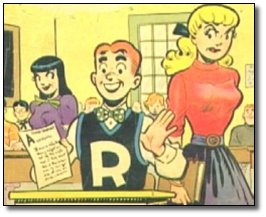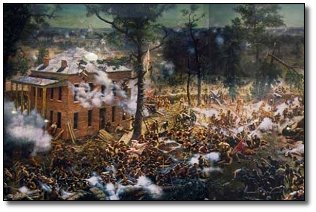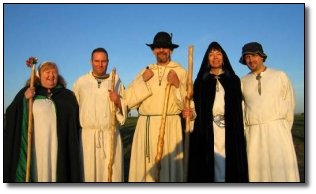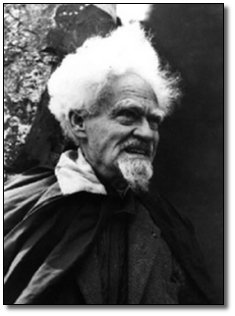6 Supposedly Ancient Traditions

Nothing shuts down a person's higher reasoning functions quite as fast as the word "tradition." If it was good enough for our ancestors, it must be good enough for us, damn it!
Unfortunately, some of the most "ancient traditions" still followed today come from people who knew this, and just made them up off the top of their head.
The Pledge

The Tradition:
According to this ridiculously schmaltzy video, this video with a hilariously ironic choice of music and 90% of the people in states beginning with the letter A, the pledge is an inviolable American tradition. Given the massive hissy-fit that erupts any time someone tries to change a single word, you'd think the version you grew up reciting was written into the constitution after the Founding Fathers watched a giant bald eagle fuck every letter into Plymouth rock.

An image that would bring a tear to Captain America's eye.
How Old It Actually Is:
The idea of pledging allegiance to the flag was basically an early viral marketing gimmick. It was first published in 1892 in a wildly popular children's magazine named The Youth's Companion. The much-bitched-about "under God" was only added to the pledge in 1954.
Who Made It Up:
Daniel Ford, the man who ran The Youth's Companion, dreamed of putting an American flag in every classroom in the country.

The man loved him some America.
Within a year, 30,000 flags had been sold. Our calculators tell us that comes out to $300,000, which was a lot more impressive a sum in 1892. The man who actually wrote the pledge was a former minister named Francis Bellamy. He was a Socialist (aka, a dirty commie) whose stated mission was to create in America's youth a habit of automatic reverence and utter loyalty to the country. He even came up with an original salute for children to give while reciting the pledge...

Things got awkward around '41.
The decision to add "under God" was made at the height of America's brief flirtation with paranoid schizophrenia, otherwise known as McCarthyism. Congress felt the pledge, like most people at the time, just wasn't American enough. How were these children standing around the American flag, pledging "allegiance to the flag of the United States of America, and to the republic for which it stands" to know that they weren't in the Godless Soviet Union? Thus, Congress added God to the pledge, and every generation who passed through a public school after 1954 was transferred into a flawless vessel of patriotism.

Bushido - The Ancient Code of the Samurai

The Tradition:
For centuries, the samurai and their spiritual descendants followed "the way of the warrior," living lives governed by its tenets of honor, strict devotion to one's master and, above all, self sacrifice. This ancient tradition helped make World War II a hell of a lot scarier, since, according to the Internet, "Kamikaze pilots used the samurai and their code for inspiration ... Just like the samurai, kamikaze pilots had no fear of death, and were honorable men that were loyal to their country."
How Old It Actually Is:
The idea that samurai are either loyal to their country or eager to die in battle is approximately as old as Walt Disney. Bushido as a coherent ideology only dates back to 1905.
Who Made It Up?
The whole thing started with an honest, if pretty stupid mistake by a historian named Nitobe Inazo, who based his 1905 book Bushido: The Spirit of Japan on rules written for samurai. This is the equivalent of reading a high school handbook and determining that teenagers live by a strict code of attending class, and turning weed dealers in to the cops.

According to Karl Firday, professor of history at the University of Georgia and author of a bunch of really smart books on Japan, aside from laws that they were told to follow, the history of the samurai is notable for a complete lack of evidence that they were any more happy to die in battle and even a little bit loyal. It's entirely possible that a warrior sacrificing his life was seen as noble, but that's no different than the European code of chivalry which also made room for honorable suicide. In fact, the evidence paints a picture of samurai that looks more like a modern professional athlete than what we see in our martial arts films. They'd fight and kill for you as long as the money was right. When it wasn't, they'd switch sides, and slice the word "for" clean out of the previous sentence.
So if Japan was one big game of "fuck your buddy with a sword" and Europe was the land of the noble warrior falling on his, how did a bunch of Japanese pilots find themselves swan diving at air craft carriers while saying prayers to the medieval equivalent of Terrell Owens?

As it turns out, our modern concept of Bushido developed as a method of social control. The Emperor and the Imperial Army and Navy wanted something that would boost their men's fighting spirit. When Nitobe Inazo sucked at his job badly enough to write that "the way of the warrior is to die," they all just sort of nodded and said, "Yep, that's the way of the warrior alright!"

Psyche!
Islamic Fundamentalism

The Tradition:
The boogeyman that replaced the specter of communism in the hearts of terrified Westerners, Islamic fundamentalism seems to come from another time. They rage against science, Western ideals and the basic rights of women. That's why you hear people on Fox News claiming that Muslim world is stuck in the Dark Ages.

"You can't use reason with these people. They only understand shadow puppets."
How Old It Actually Is:
Actually, the Middle East's clock stopped around the same time as the one at Marty McFly's high school in the 1950s. If the Arab world was really still stuck in the Middle Ages, everyone would be a lot better off.
Who Made It Up?
During the period the the Western world thinks of as the Dark Ages, when Europeans were busy murdering each other over matters of religion and superstition, Islam was cool as a cucumber. At the time, Islamic regions were actually more accepting of Judaism and Christianity than most of the Christian world was of Judaism and other types of Christianity. Long before the Italian Renaissance, the Islamic Empire realized the Greeks and Romans had been on to something with this book learning stuff, and used this realization to revolutionize astronomy, literature, physics, philosophy and architecture. Still bored, they went ahead and invented algebra and modern medicine too.

"George Washington invented numbers! We call them Arab numerals to mock them!"
The antiquated practices many Westerners associate with modern Islam are actually a relatively recent development. Reporting from Saudi Arabia for The New Yorker, Lawrence Wright interviewed an older Saudi man who reminisced about the good old days when men and women used to be able to celebrate weddings together. While it might seem weird to Westerners used to hearing stories of ankle length hemlines following the words "Back in my day... ," in the Middle East, when grandparents miss the good old days, they're often talking about a place that was far less up its own ass.

"We had books. And the orgies! Don't get me started on the orgies ...
It wasn't until the 1950s that fundamentalist Islam started gaining influence, and outdated, dying traditions like the veil saw a spike in popularity. That's when followers of a fringe 18th century scholar Mohammed Al Wahab began to take Islam back to basics, which in this case meant an imaginary past where women were treated like shit and all the pesky "progress" of the last 1400 years never happened. During his lifetime, Wahab was taken about as seriously as Pat Robertson is taken today in the West. But in the 1950s, Wahabi Muslim thinkers like Sayyid Qutb started to urge total separation between Islam and the West, arguing that the outside world had "nothing else to give humanity."

Oh really, Qutb?
Qutb and his fundamentalist contemporaries inspired a new generation of radical thinkers, who took this "fuck the West" mentality a few steps further, resulting in a Middle East that is far less progressive than the Dark Ages they're supposedly stuck in.

Some people shouldn't be encouraged to "shoot for the stars."
See, as tempting as it might be to divide history into the bad guys and the good guys, civilizations tend to evolve more like the Batman franchise, kicking ass part of the time, and reaching unspeakable, ass backwards lows that would embarrass their ancestors at others. Muslim people were doing algebra while we were burning women for having funny birthmarks on their face. They just happen to be going through their Batman and Robin phase.
Pretty Much All of Thanksgiving

The Tradition:
Pumpkin pie, giant helpings of turkey, stuffing, mashed potatoes and sweet, artery-plugging gravy. Thanksgiving combines gluttony with drunkenness and sports hooliganism and you don't have to feel guilty about any of it because it's even older than America. The first Thanksgiving took place in 1621 at the Plymouth colony in what is now Massachusetts. The starving colonists shared a meal with the natives and formed a friendship that would last until syphilis and exposure killed them all.
How Old It Actually Is:
Thanksgiving as we celebrate it today was finalized on 1941, coincidentally only one year after America's favorite turkey supplier first trademarked the name Butterball.

America loves it some turkey.
Who Made It Up?
It's true that a meal took place in 1621, but like most meals, it was pretty much a one-off thing. There were a few local celebrations held on varying dates, but people were generally too damn poor or busy running revolutions to bother with another holiday. Thomas Jefferson even called them "a monarchical institution."

Way to shit on everyone's good time, TJ.
All of the traditional foods and pageantry we associate with Thanksgiving are the invention of one pushy broad named Sarah Hale. She finally nagged Abe Lincoln into creating a new holiday in 1863.
The food at the original Thanksgiving was a motley assortment of fowl (possibly not even turkey), cod, corn and venison. Mrs. Hale, editor of Godey's Lady's Book (the Cracked Magazine of its day) realized that history would need to be jazzed up a bit if Thanksgiving was to have a future. She put together a massive recipe book that included many treats we still enjoy today, as well as batshit crazy heart-murdering foods like "ham soaked in cider for three weeks, stuffed with sweet potatoes and baked in maple syrup."
Mrs. Hale was convinced that, if she could just get enough families to sit down for Thanksgiving dinner, she could avert the Civil War. Obviously, she failed, but President Lincoln thought the idea had enough merit that he tried it anyway.

Some things are beyond even the power of cider-drenched ham.
For the first half of the 20th century, Thanksgiving was celebrated mainly by the rich and wannabe rich, since no one else could afford to waste the money. In 1939, FDR decided to change the date in order to give retailers more time to get ready for Christmas. For two years, people celebrated Thanksgiving on different days depending on their political orientation. It wasn't until 1941 that Congress set the date we still use today.
Scottish Hipsters "Invent" the Kilt and Clan Tartans

The Tradition:
When you think of Scotland, chances are you think of hilariously incomprehensible alcoholics, Nessie and Groundskeeper Willy, and you picture them all wearing kilts. The Internet is absolutely littered with guides to Scottish clans, all of which include information on the clan's inevitably ancient and storied tartan: the specific pattern of colors on their man-dress. But you didn't need the Internet to be invented to teach you about the ancient roots of the kilt. Braveheart clearly shows William Wallace and an entire army of Scots fighting for their right to wear skirts back in the 1300s.

Here we see the venerable, ancient tartan of Clan Digicam.
How Old It Actually Is:
The kilt was invented in 1725, otherwise known as 400 years after William Wallace died.

Which dates back about as far as the first orthodontic braces.
Who Made It Up?
Prior to 1725, but well after the invention of pants, Scottish highlanders were wearing a robe-like proto-kilt called a plaid. So to be fair, the Scots were covering their unmentionables with ridiculous plaid clothing long before the kilt. An English iron-master named Thomas Rawlinson noticed that robes, while great for receiving commandments from God on a mountaintop, were somewhat " cumbrous, and unwieldy" for the Scots he employed to work over an iron furnace all day. Knowing that Scots' would not tolerate cloth between their scrotum and the ground, he invented a skirted plaid, and the kilt was born.

"Hi, I'm Mel Gibson. My hobbies include anti-semitism and taking great, steaming green shits on history."
Well at least the patterns on their "plaids" have always had a unique tie to ones ancestral identity, right? Actually, that apparently didn't happen for another hundred years, and this time instead of saving Scottish balls from being melted, it was capitalism, plain and simple.
Once the kilt had been invented, outlawed and then reinvented as a sort of hipster retro look, a cadre of textile manufacturers sprouted up to cater to the needs of the Highland regiments. One firm named William Wilson and Son of Bannockburn noticed that many wealthy, fashionable young Scotsmen had taken to wearing kilts. Some had even formed clubs around the trendy garment. There's even an ad from the 1700s claiming a 'great choice of tartans, the newest patterns,' which either means the Scottish switched families based on the hottest new fashion trends, or the Tartan thing is bullshit.
Mr. Wilson and Son may go down in history as the first designers to exploit gullible hipsters for money. They allied with the Highland Society of London and put together a key pattern book of all the clan tartans in 1819. The society matched clans to patterns and passed the whole sham off as an attempt to reconnect the people of Scotland with their ancient history.
With Apologies to Our Pagan Friends

The Tradition:
Wicca, Druidism and other neo-pagan faiths offer a great many things to their roughly one million adherents. Spiritual fulfillment, friendly communities of like-minded believers and some of the best drug fueled sex parties you'll find this side of Lichtenstein. But it's all good, people have been wearing immense hooded robes, and sacrificing goats around bubbling cauldrons since years before we had electricity, right?
Most practitioners will acknowledge that Wicca as a recognizable faith is about 60 years-old. The neo-Druidic faiths popped up around the mid-1700s. In both cases, the leaders of either movement claimed to be bringing back some ancient religions.

10 to one odds these guys know where to find some kick ass weed.
How Old They Actually Are:
A few years younger than the con men who popularized them. Most of modern codified Wiccan thought comes back to three people who just sort of made it all up in the late 19th and early 20th century. "Old" Welsh and Druidic traditions don't fare much better; they have their genesis in 1792.
Who Made It Up?
Trust us when we say that the average author will write literally anything for sex, drugs, money or all of the above.
Charles Leland, Margaret Murray and Gerald Gardner all published books that, they claimed, held the ancient secrets of witchcraft. Leland pretended to have learned the doctrines of Old Italian witchcraft from a sorceress named Maddalena. Margaret Murray is the woman who coined the term "burning times," while Gerald Gardner asserted that Wicca began in pre-history and went "underground" throughout most of recorded history.
Gardner was probably the chief founder. Some people even call him the father of Wicca, as he founded the tradition from which most current blends of Wicca descend. Also, he looked like this:

Gardner claimed to have gathered traditions and beliefs from surviving covens that had "gone to ground" centuries or millennia ago. Of course, there's absolutely no way to verify any of Gardner's claims. We do know that he plagiarized quite a bit from Aleister Crowley. Also hurting his case is the approximately zero archeological, written or any other sort of other record of any of the practices he "brought back." Since "underground" is archeologists favorite place to look, that doesn't bode well.
The foundations of neo-Druidic and "ancient" Welsh cultural traditions go back a little further. In 1792 a hallucination-prone laudanum addict named Iolo Morgannwg (originally Edward Williams) started to hold Druidic (Druish?) ceremonies in London. He wrote up lists of rituals and practices and set up gorseddau, or Druish sects, across Wales.

Druish high priestess.
Long after his death, all of Morgannwg's writings were revealed to be outright forgeries or total rewrites of older works. To Iolo's credit, he only used his newfound religion to make a ton of money selling books and (presumably) to sleep with girls in the 18th century counter-culture. We suppose that makes him kind of a dick, but deep down, that's why we write every article we've ever posted.

18th Century Girls: Don't knock 'em until you've tried one.